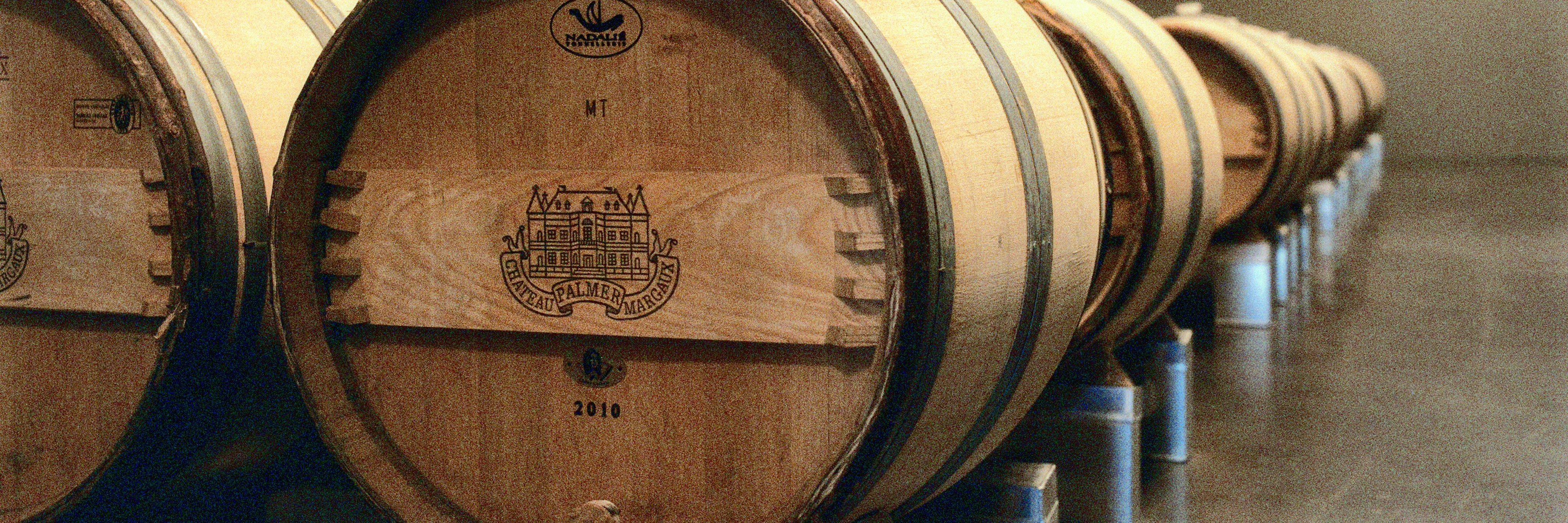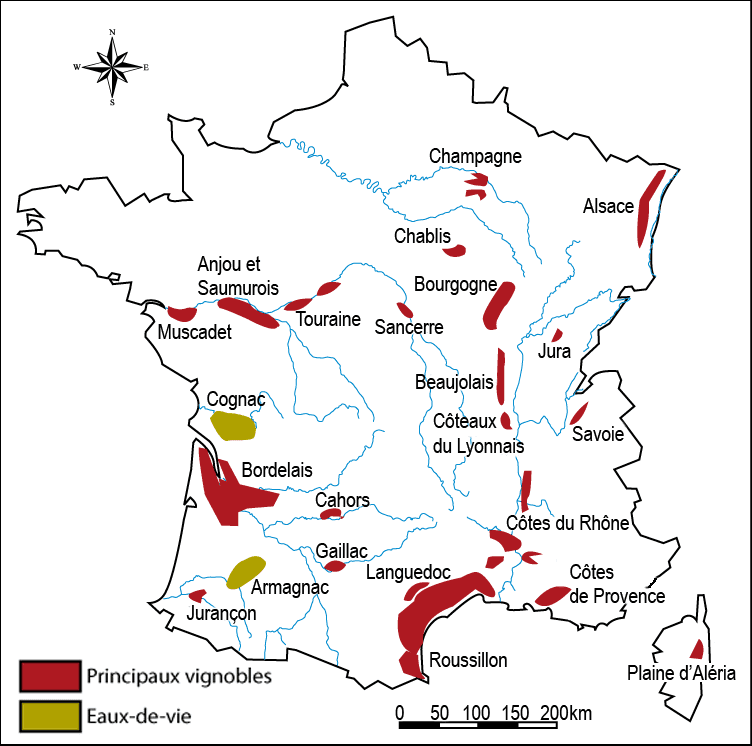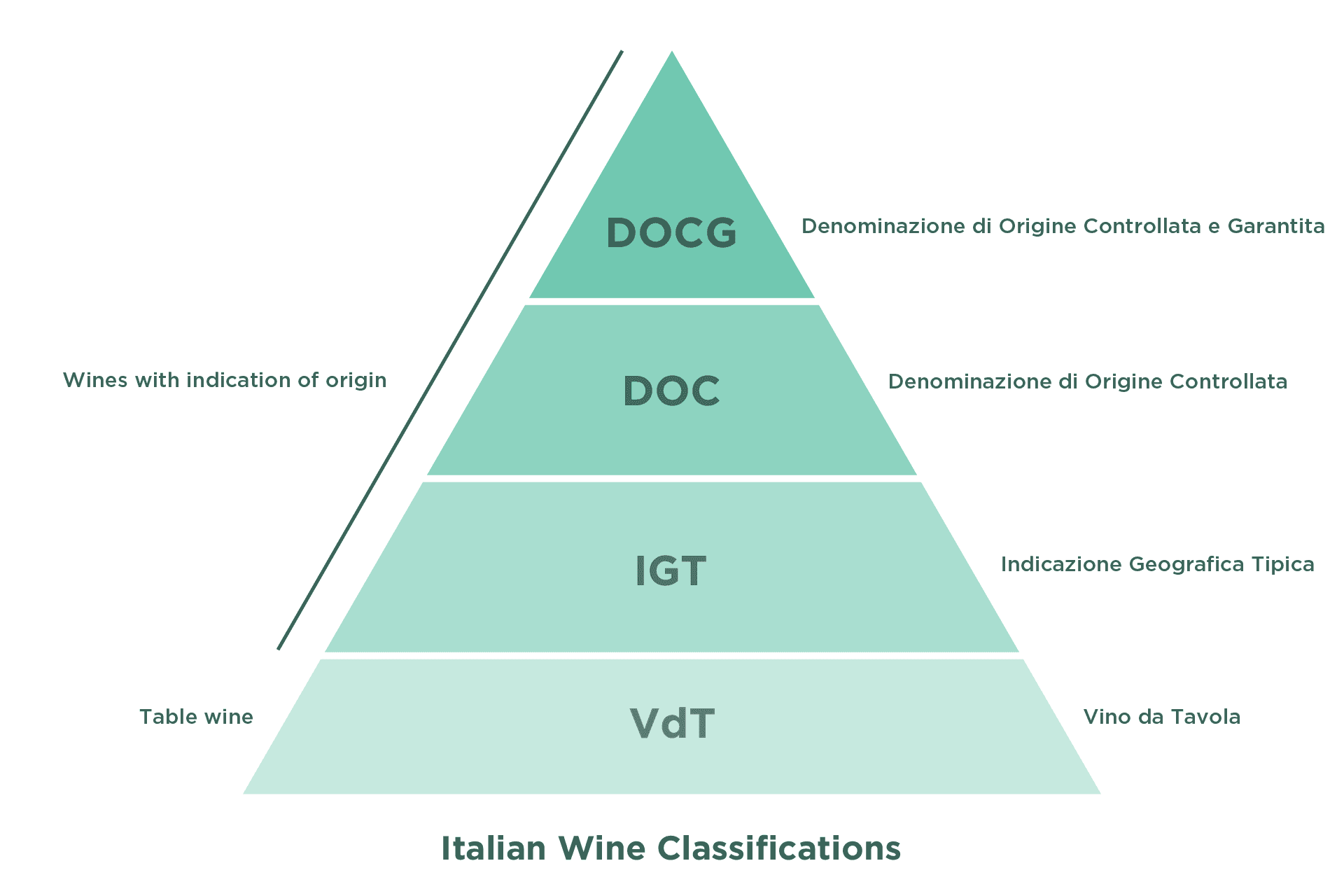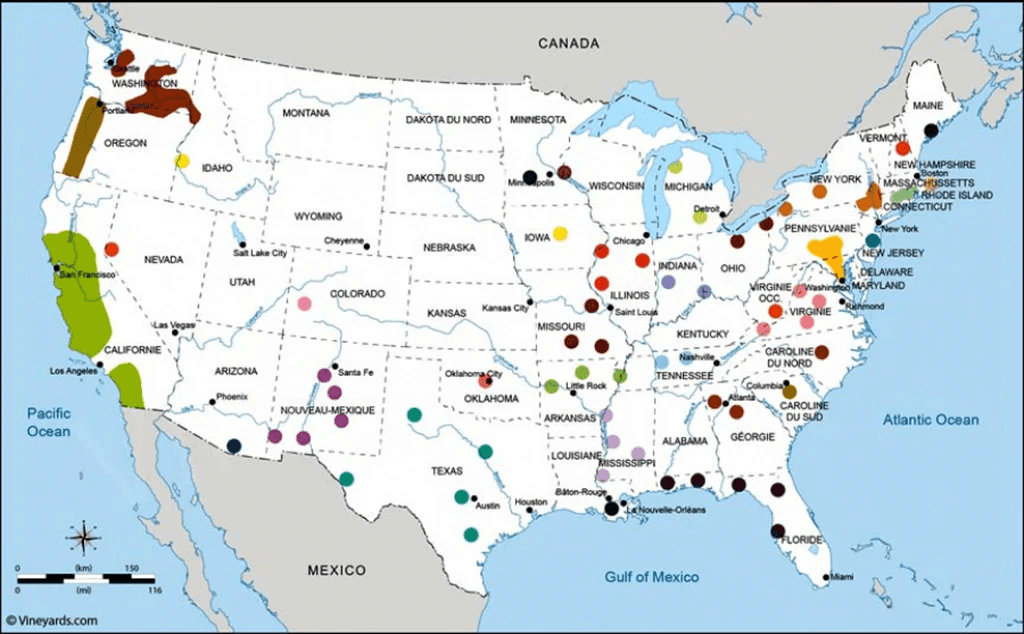
Wine Basics
Wine Investing
Apr 24, 2025
The Different Types of White Wine: An In-Depth Analysis (2024)
Introduction
White wines offer a diverse range of flavors and styles, reflecting the unique characteristics of the grape varieties and regions from which they originate. This article explores the major types of white wine, examining their distinct attributes, production methods, and notable regions of origin.
Chardonnay

Buttery Chardonnay.
Characteristics and Flavor Profile
Chardonnay is one of the most popular and widely planted white grape varieties globally. Its flavor profile can vary significantly based on where it is grown and how it is made. Typically, Chardonnay can exhibit flavors ranging from green apple, pear, and citrus in cooler climates to tropical fruits like pineapple and mango in warmer regions. When aged in oak barrels, it may also develop notes of vanilla, butter, and toast.
Production Methods
Chardonnay is versatile in winemaking. It can be made as a still or sparkling wine and may undergo malolactic fermentation, which converts tart malic acid into softer lactic acid, giving the wine a creamy texture. Aging in oak barrels can add complexity and depth.
Notable Regions
Burgundy, France: Known for its elegant and mineral-driven Chardonnays, particularly from regions like Chablis and Côte de Beaune.
California, USA: Produces a wide range of styles, from oaky and buttery to crisp and unoaked.
Australia: Especially in regions like Margaret River and Yarra Valley, known for both rich, oaky styles and fresher, more restrained versions.
Sauvignon Blanc

Fresh and crisp Sauvignon Blanc
Characteristics and Flavor Profile
Sauvignon Blanc is known for its high acidity and vibrant, aromatic profile. Typical flavors include green apple, lime, passion fruit, and herbaceous notes like bell pepper and grass. In some regions, it can also exhibit a flinty, mineral quality.
Production Methods
Sauvignon Blanc is usually fermented in stainless steel to preserve its fresh, zesty character. In some cases, it may see a short period of oak aging to add complexity and roundness.
Notable Regions
Loire Valley, France: Particularly Sancerre and Pouilly-Fumé, known for their crisp, mineral-driven Sauvignon Blancs.
Marlborough, New Zealand: Renowned for its intensely aromatic and fruity styles.
California, USA: Offers a range of styles from grassy and herbaceous to richer, more tropical expressions.
Riesling

A selection of Austrian Rieslings
Characteristics and Flavor Profile
Riesling is celebrated for its aromatic intensity, high acidity, and ability to produce wines ranging from bone dry to lusciously sweet. Common flavors include green apple, citrus, peach, and apricot, often with a distinctive minerality and petrol note as it ages.
Production Methods
Riesling is typically fermented in stainless steel to maintain its fresh and vibrant character. Sweet Rieslings are often made by halting fermentation early to retain residual sugar, or by using late-harvested or botrytized grapes.
Notable Regions
Mosel, Germany: Known for its light, delicate, and high-acid Rieslings with pronounced minerality.
Alsace, France: Produces dry, full-bodied Rieslings with intense aromatics.
Clare Valley, Australia: Renowned for its dry, lime-accented Rieslings.
Pinot Grigio/Pinot Gris

A tale of two countries.
Characteristics and Flavor Profile
Pinot Grigio (Italy) and Pinot Gris (France) are two names for the same grape variety, though the styles they produce can be quite different. Pinot Grigio is typically light-bodied with high acidity and flavors of green apple, pear, and lemon. Pinot Gris, on the other hand, often has a richer texture and can exhibit flavors of apple, peach, and spice.
Production Methods
Pinot Grigio is usually fermented in stainless steel to preserve its crisp, fresh character. Pinot Gris can be made in a range of styles, from light and crisp to rich and full-bodied, sometimes with a touch of residual sugar.
Notable Regions
Veneto, Italy: Known for its light, crisp Pinot Grigio.
Alsace, France: Produces richer, more textured Pinot Gris.
Oregon, USA: Known for both light and rich styles of Pinot Gris.
Chenin Blanc

Chenin Blanc
Characteristics and Flavor Profile
Chenin Blanc is a versatile grape capable of producing a wide range of wine styles, from dry to sweet and even sparkling. Common flavors include apple, pear, quince, and honey, often with a characteristic acidity that balances the wine’s richness.
Production Methods
Chenin Blanc can be vinified in stainless steel or oak, depending on the desired style. Sweet versions are often made from late-harvest or botrytized grapes.
Notable Regions
Loire Valley, France: Particularly Vouvray and Savennières, known for their complex and age-worthy Chenin Blancs.
South Africa: Produces a variety of styles, from fresh and fruity to rich and oaky.
Conclusion
White wines offer a remarkable diversity of styles and flavors, shaped by their grape variety, region of origin, and production methods. From the rich and oaky Chardonnays to the aromatic and crisp Sauvignon Blancs, each type of white wine provides a unique tasting experience, reflecting the intricate interplay of terroir and winemaking techniques. Understanding these differences enhances our appreciation and enjoyment of these elegant and versatile wines.
Enjoyed the article? Spread the news!
Read More

Wine Investing
Jan 14, 2026
What Is En Primeur?
What Is En Primeur?
En primeur refers to the practice of buying wine before it has been bottled, while it is still ageing in barrel. Buyers commit capital today for wine that will only be delivered 12 to 24 months later, based on early tastings, critic assessments, and the reputation of the producer and vintage.
The system is most closely associated with Bordeaux, where it has operated at scale for decades, though variations exist in Burgundy, the Rhône and parts of Italy. While en primeur is often discussed as an investment opportunity, at its core it is simply a forward market for wine, a mechanism that allows wine to be priced and sold before it physically exists.
Whether that forward price represents value is the more important question.

Why En Primeur Developed
En primeur did not begin as an investment strategy. It emerged as a practical solution to a structural problem, cash flow.
Selling wine early allowed châteaux to finance operations, manage working capital, and reduce balance sheet risk. Merchants assumed the price risk and inventory burden, while buyers gained earlier access to sought after wines, occasionally at a discount for committing capital in advance.
As the market evolved, several shifts changed the character of the system. The introduction of standardised critic scoring created globally legible price signals. Demand became increasingly international, particularly from the US and Asia. Prices began to move well before wines were bottled, shipped, or consumed.
At that point, en primeur stopped being purely about financing production and became a mechanism for setting expectations.
How En Primeur Works in Practice
After harvest, wines enter barrel and remain there for up to two years. The following spring, critics and merchants taste unfinished samples during the annual en primeur tastings. Based on these assessments, châteaux release wines at a set price, typically in tranches, with volumes allocated to merchants.
Buyers who participate commit capital at this stage. Delivery takes place once the wine has been bottled and released, usually 12 to 24 months later.
During this period, buyers do not hold a liquid asset. They hold a claim on future delivery. That distinction is important, particularly from an investment perspective.
The Investment Case for En Primeur
When en primeur has worked well historically, it has done so for structural rather than speculative reasons.
The strongest performers tend to be wines with sufficient production to trade regularly, deep and established secondary markets, and release pricing that leaves room for appreciation once the wine becomes physical. In these cases, en primeur can provide access to wine at prices below long term fair value, particularly in undervalued vintages or periods of rising demand.
However, these conditions are not consistent. They depend heavily on pricing discipline at release and broader market sentiment.

Where En Primeur Often Falls Short
A common assumption is that buying early means buying cheaply. In practice, this is frequently untrue.
In recent years, many châteaux have priced wines to reflect anticipated future appreciation, rather than current market conditions. This shifts a significant portion of the upside from buyers to sellers and leaves little margin for error.
As a result, it has become increasingly common for wines to trade on the secondary market at or below their en primeur release price once they are physically available. This is not necessarily a failure of the wine itself, but a function of forward pricing in a market where sellers retain considerable influence.
Capital Lock Up and Opportunity Cost
Beyond price risk, en primeur carries meaningful capital considerations. Funds are committed for an extended period, with no yield and limited liquidity. Exit options prior to physical release are constrained, and pricing during this phase is highly sensitive to shifts in sentiment, macro conditions, and revised quality assessments.
These factors are often underemphasised in en primeur marketing, but they play a significant role in determining whether participation makes sense from a portfolio perspective.

En Primeur Versus the Physical Market
The key difference between en primeur and buying physical wine is timing.
En primeur requires investors to assume risk before information is complete. The physical market, by contrast, prices wine after quality has been realised, supply is known, and trading patterns are established.
Neither approach is inherently superior. They simply involve different risk profiles. The mistake is treating them as interchangeable.
How WineFi Approaches En Primeur
At WineFi, we do not treat en primeur as the default entry point for fine wine investment. We view it as situational.
Participation only makes sense when release prices sit clearly below observable fair value, liquidity pathways are well established, and the opportunity cost of capital is justified. In many cases, the secondary market offers more attractive risk adjusted entry points with greater flexibility and fewer assumptions.
En primeur is not where returns are automatically generated. It is where pricing errors occasionally occur.
Closing Thoughts
En primeur remains an important part of the fine wine market. It is not obsolete, nor is it inherently advantageous.
Used selectively and with discipline, it can play a role. Used reflexively, it often disappoints. Understanding en primeur, therefore, is less about learning how to buy early and more about knowing when waiting is the better decision.
That distinction is where long term outcomes are shaped.

Wine Investing
Wine Basics
Jan 14, 2026
Who Is Robert Parker and Why He Matters
Robert Parker is an American wine critic best known as the founder of The Wine Advocate. Since the late 1970s, his writing and scoring have played a significant role in shaping how fine wine is evaluated, priced and traded, particularly at the upper end of the market.
For many investors and collectors, Parker’s influence is most visible through numbers. His use of the 100 point scoring system helped make wine quality easier to compare across producers, regions and vintages. Over time, those scores became embedded in the mechanics of the fine wine market itself.
Understanding Parker’s role is therefore less about personal taste and more about market structure.
The Wine Advocate and the Rise of Scoring
The Wine Advocate was launched in 1978 as an independent publication, initially focused on Bordeaux. At the time, much of wine criticism was opaque, relationship driven and difficult for international buyers to interpret.
Parker took a different approach. Wines were scored numerically and reviewed with a clear point of view. A single score could be read, understood and acted upon by buyers anywhere in the world.
This mattered because it reduced friction. Buyers no longer needed deep regional knowledge or direct access to merchants to form a view on quality. A score became a portable signal.
As the publication’s readership grew, so did the market’s sensitivity to those scores.
Parker’s Influence by Region
Parker’s impact was not uniform across the wine world.
He was particularly influential in Bordeaux, where en primeur pricing became closely tied to his early assessments. High scores often translated directly into higher release prices and stronger early secondary market demand.
His influence also extended into the Rhône, where he played a major role in elevating the global profile of producers such as Châteauneuf du Pape and Hermitage, and into parts of California, where his preferences aligned with richer, more powerful styles during the 1990s and early 2000s.
In regions where production volumes were sufficient to support secondary market trading, Parker’s scores became especially powerful price signals.

Parkerisation and Style Drift
As Parker’s influence grew, a phenomenon emerged that became known as Parkerisation.
Producers, consciously or not, began adjusting winemaking styles to appeal to the palate that appeared to score well. This often meant riper fruit, higher alcohol, more extraction and more new oak.
In some regions, this led to a degree of stylistic convergence. Wines became more homogeneous, at least at the top end of the market, as producers competed for critical recognition and the pricing power that came with it.
While this increased short term demand and visibility, it also sparked debate around diversity, regional identity and long term drinkability.
Parker and Other Critics
Parker did not invent numerical scoring, nor does he operate in isolation today.
Other critics and publications, including Wine Spectator, James Suckling, Vinous, Wine Enthusiast and Jancis Robinson, also use structured scoring systems, often on similar scales. Each has developed influence in different regions and market segments.
The key distinction is not the existence of scores, but how markets respond to them. Some critics have a measurable impact on price formation in certain regions. Others primarily influence consumer sentiment or short term demand.
The market has learned to differentiate.
Scores, Prices and the Price Per Point Effect
As scoring systems became embedded in the market, prices began to anchor not just to quality, but to quality relative to price.
One way this shows up is through price per point ratios. Two wines may receive the same score, but trade at very different prices. Conversely, some wines command significantly higher prices for relatively small differences in score.
This matters because scores are not linear in their economic impact. The difference between 94 and 96 points can have a disproportionate effect on demand and pricing, particularly in regions where critical opinion strongly influences buying behaviour.
Over time, markets tend to normalise these relationships. Wines that are expensive relative to their score often struggle to outperform unless scarcity or brand power compensates. Wines that offer strong scores relative to price tend to see more consistent demand and, in some cases, stronger price appreciation.
Understanding this dynamic is more useful than focusing on scores in isolation.
How Scores Behave Over Time
One important feature of critical opinion is that it evolves.
Wines are often rescored after bottling, and again after several years of ageing. Initial en primeur scores may be revised up or down as wines develop, and these revisions can influence price performance, particularly in the early years of a wine’s life.
However, the impact of rescoring varies by region and by critic. In some markets, early scores dominate pricing behaviour. In others, long term trading history matters more.
How WineFi Uses Critic Scores
At WineFi, critic scores are treated as inputs, not conclusions.
Our quantitative models incorporate both initial scores and subsequent rescores, but they are weighted based on observed influence on price performance within a given region. Critics are therefore weighted differently depending on where their opinions historically move prices.
We also analyse how scores relate to price through metrics such as price per point, allowing us to identify wines that are priced efficiently, aggressively, or attractively relative to their critical reception.
Scores are contextualised alongside liquidity, trading frequency, production scale and long term price data. No single score, or critic, determines an investment decision.
Closing Thoughts
Robert Parker’s significance lies in how he helped standardise the communication of quality at a global level.
By making wine easier to compare, he contributed to the development of deeper secondary markets and more transparent pricing. His influence also shaped production decisions and market dynamics, particularly in regions where trading activity was already emerging.
Today, Parker is one voice among many. His legacy, however, remains embedded in how fine wine is priced, traded and understood.
For investors, understanding that legacy is less about following scores and more about understanding how scores interact with price, liquidity and time.

Wine Investing
Jan 14, 2026
Appellation Rules: What They Are and Why They Matter
Appellation rules are the legal frameworks that define where a wine comes from and, in many cases, how it is made. They determine what can appear on a label, which grapes may be used, how much wine can be produced, and the minimum standards a wine must meet to carry a regional name.
While appellations are often discussed in terms of tradition or quality, their real importance lies in how they shape supply, consistency, and long-term market behaviour.
What appellations actually do
At their core, appellations exist to protect origin. They ensure that a wine labelled from a specific place genuinely comes from that place, and that it meets agreed standards associated with that region.
Most systems regulate a combination of geography and method. This typically includes defined vineyard boundaries, permitted grape varieties, yield limits, and winemaking practices. These rules are enforced by regulatory bodies, and wines must meet formal criteria before they can use an appellation name.
This shared framework allows wines from different producers and vintages to be compared, traded, and valued across international markets.
The European model: origin and production combined
In much of Europe, appellations regulate not just where wine is made, but how it is made.
France operates under the AOC, or Appellation d’Origine Contrôlée, now formally aligned with the EU’s AOP, Appellation d’Origine Protégée. These designations tightly define geographic boundaries and production rules, embedding scarcity directly into the system.

Italy uses a similar structure through DOC, Denominazione di Origine Controllata, with DOCG, Denominazione di Origine Controllata e Garantita, representing the most strictly regulated tier. Spain applies DO and DOCa classifications, while Germany combines regional quality categories with its traditional Prädikat system, which historically focused on grape ripeness at harvest.

Across these countries, vineyard boundaries are fixed and yields are capped. When demand rises, producers cannot simply increase output. Prices, rather than supply, do the adjusting.
Flexible categories and innovation
Alongside these top-tier appellations, most European countries also offer broader designations. France’s IGP, Italy’s IGT, and Spain’s Vino de la Tierra allow greater flexibility in grape choice and winemaking while still indicating geographic origin.
These categories exist to give producers room to innovate outside rigid traditional rules. Some of the world’s most successful modern wines began life in these classifications before building enough reputation to stand on their own.
While appellation prestige remains important, the market ultimately prices reputation, consistency, and demand.
New World approaches: geography first
Outside Europe, appellation systems tend to be far less prescriptive.
In the United States, American Viticultural Areas (AVAs) define geographic origin but impose few restrictions on grape varieties, yields, or winemaking techniques. A wine labelled with an AVA must source most of its grapes from that area, but stylistic decisions are largely left to the producer.

Australia follows a similar approach through its Geographical Indication (GI) system, focusing on accuracy of origin rather than mandated production methods. The United Kingdom applies PDO and PGI classifications, particularly for English sparkling wine, but again with relatively limited constraints.
These systems prioritise transparency over tradition. They allow producers to respond more freely to market demand, but they do not embed scarcity in the same way as Europe’s tightly regulated appellations.
Why appellation rules matter
Appellations shape more than labels. They influence how much wine can be made, how supply behaves over time, and how scarcity is maintained.
Regions with strict appellation rules and long-established reputations tend to show more stable pricing and deeper secondary market liquidity. Regions with looser frameworks often rely more heavily on producer brand strength to support long-term value.
For anyone looking to understand fine wine beyond consumption, appellations provide essential context. They are not guarantees of quality or performance, but they form the structural backbone of how wine is produced, traded, and priced globally.
In that sense, appellation rules are not just about tradition. They are one of the mechanisms that allow fine wine to function as a coherent international market at all.


